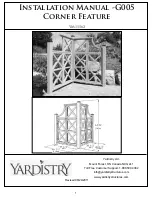
Rotational Vacuum Concentrator RVC 2-18 CDplus
HCl resistant version
12 Glossary
Version 04/2012, Rev. 2.3 of 03/07/2017
• sb
79 / 84
Translation of the original operating manual
12 Glossary
Boiling retardation
The temperature of a liquid can rise above the boiling point without the
liquid actually starting to boil. Vibrations or shocks quickly lead to the
formation of a large gas bubble that escapes explosively from the vessel.
This phenomenon is known as boiling retardation. It occurs when neither
the liquid nor the wall of the vessel include any condensation nuclei at
which vapour bubbles might form.
Pressure increase test
The pressure increase test is used to determine whether the evaporation in
the rotor chamber is complete. During the pressure increase test, the rotor
chamber is separated from the cooling trap or vacuum pump by way of the
stop valve. The system evaluates the pressure increase that is caused by
any additionally released steam.
In order to perform the pressure increase test, limits for the pressure
increase as well as the test duration must be defined beforehand.
Relative centrifugal force
The relative centrifugal force is the acceleration that the samples are
subjected to during the rotation. The acceleration is stated as a multiple of
the mean gravitational acceleration g. It can be increased by increasing the
radius inside the rotor chamber and by increasing the speed. These three
parameters are interdependent and linked with each other via the following
formula:
Relative centrifugal force RCF = 11.18 x 10
-6
x r x n
2
r = radius in cm
n = speed in rpm
RCF without any dimension






































